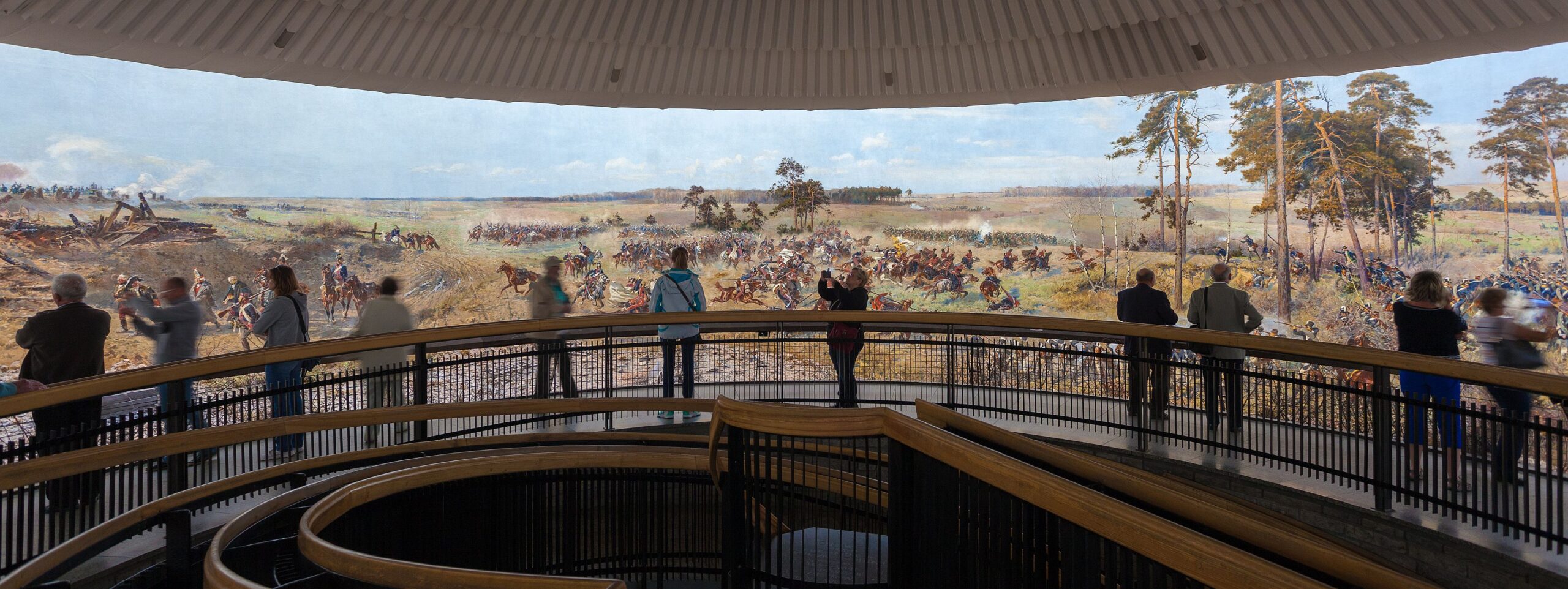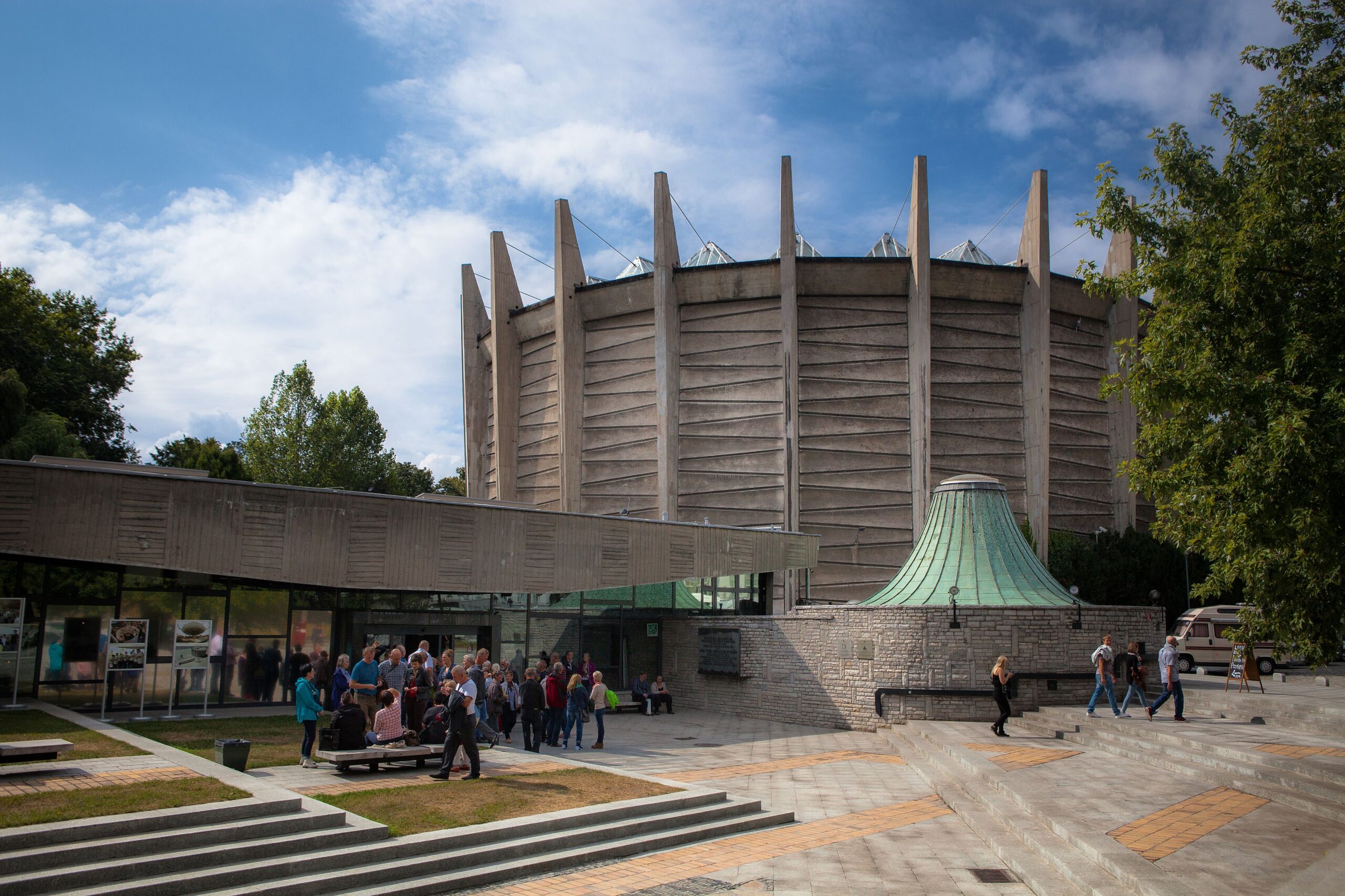Poland’s oldest cycloramic painting – a panorama that wraps around viewers who stand in the middle of a cylinder, giving them a 360° view – has reopened this year in a modernised home.
The Racławice Panorama, created in 1893-94, is one of the world’s few remaining examples of what was a popular genre of art in the 19th century. It depicts the 1794 Battle of Racławice, part of the Kościuszko Uprising to liberate Poland from foreign rule.
The painting, which is 15 metres tall and 114 metres wide, shows soldiers and peasant volunteers standing off against the Russian army under General Alexander Tormasov.

Part of the Racławice Panorama (Mariusz Cieszewski/Ministry of Foreign Affairs of Poland/Flickr, under CC BY-NC 2.0)
Visiting the painting this week in Wrocław, Poland’s culture minister, Piotr Gliński, celebrated the fact that “we have preserved heritage that is important not only for Wrocław and the whole of Poland, but also in the European dimension”.
The minister noted that the panorama has the highest attendance of any exhibition at the National Museum in Wrocław, and hence generates the highest income. It attracts an estimated 400,000 visitors each year.
The work was originally created and housed in the city of Lwów, which was then in the Austro-Hungarian Empire and later became part of independent Poland after the First World War. It was painted by a number of artists, the most prominent of whom were Jan Styka, the visionary behind it, and Wojciech Kossak.
The painting was conceived as a patriotic commemoration to mark the centenary of the Battle of Racławice, at a time when Poland was still partitioned between Russia, Germany and Austria-Hungary.

Wojciech Kossak painting the panorama in 1894 (under public domain)
During the Second World War, the painting was protected from damage by being rolled up and hidden in a monastery.
Afterwards, when Lwów (now known as Lviv) became part of Ukraine, the panorama was moved to Wrocław, which had been transferred to Poland from Germany as part of postwar border settlements. However, it was not put fully on display until the 1980s.
Modernisation works in the specially built brutalist rotunda that houses the panorama, where it has been displayed since 1985, were due to finish at the end of this year. However, they were completed in the summer, after ten months, allowing the painting to be on display since then.

The building housing the panorama (Mariusz Cieszewski/Ministry of Foreign Affairs of Poland/Flickr, under CC BY-NC 2.0)
The modernised gallery now features large LCD screens with background information on the painting and its figures available in 18 languages.
Viewers stand in the middle of the room and observe the battle episodes unfolding around them from a number of angles. Between the viewing platform and canvas, there is an artificial terrain to add depth to the scene.
The building has now also been adapted for disabled visitors and a new souvenir shop has been built. A new fire alarm system and emergency lighting were also installed. The modernisation cost 30 million zloty (€6.5 million), of which the largest chunk of 18 million zloty was provided by the European Union
.
Main image credit: Muzeum Narodowe we Wrocławiu/Facebook

Maria Wilczek is deputy editor of Notes from Poland. She is a regular writer for The Times, The Economist and Al Jazeera English, and has also featured in Foreign Policy, Politico Europe, The Spectator and Gazeta Wyborcza.




















